#shopify one product store design
Text
I will be your Shopify expert and developer for Shopify website or Shopify store design
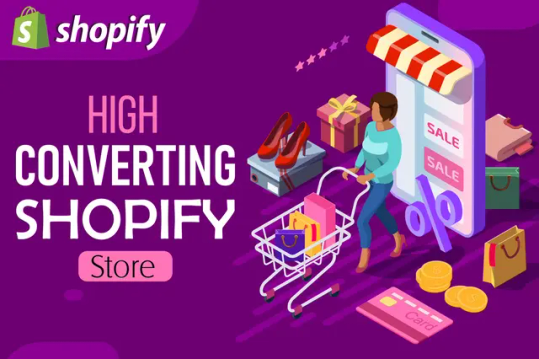
Are you looking for a money-making Shopify website or Shopify dropshipping store?
We are here to facilitate you with our vast experience in Shopify website designing. We have designed multiple figure Shopify websites or Shopify store for our clients. We can help you to design & develop a stunning, modern, eye-catching, user interface and most converting Shopify website, Shopify store or Shopify dropshipping Store from zero to finish and ready to make sell Shopify store for you.
We use modern techniques to convert your Shopify store into Real-Time Business.
Why This Gig?
Shopify Store Design
Premium design
Brand Logo
Automated Dropshipping
On-Page SEO
Trendy Products
Product Description
Marketing Guide
POD to Shopify
Google Analytics
Page Creation
Tracking Order
Product & Collection listing
Setup Payment and Much More.
Why Us?
· 3+ years of experience in Shopify Store Designing
· 100% Satisfaction
· 24/7 Support
· Money-Back Guarantee
Check it out here
Let's elevate your business to new heights together! Feel free to reach out if you have any questions or need more details. 😊
#shopify#shopify store#shopify website#shopify dropshipping#dropshipping#shopify store design#shopify store design and redesign#shopify one product store design#shopify store setup#setup shopify dropshipping store#setup shopify store#shopify store creation#copy shopify store#shopify store development#print on demand shopify store#jewelry shopify store
3 notes
·
View notes
Text
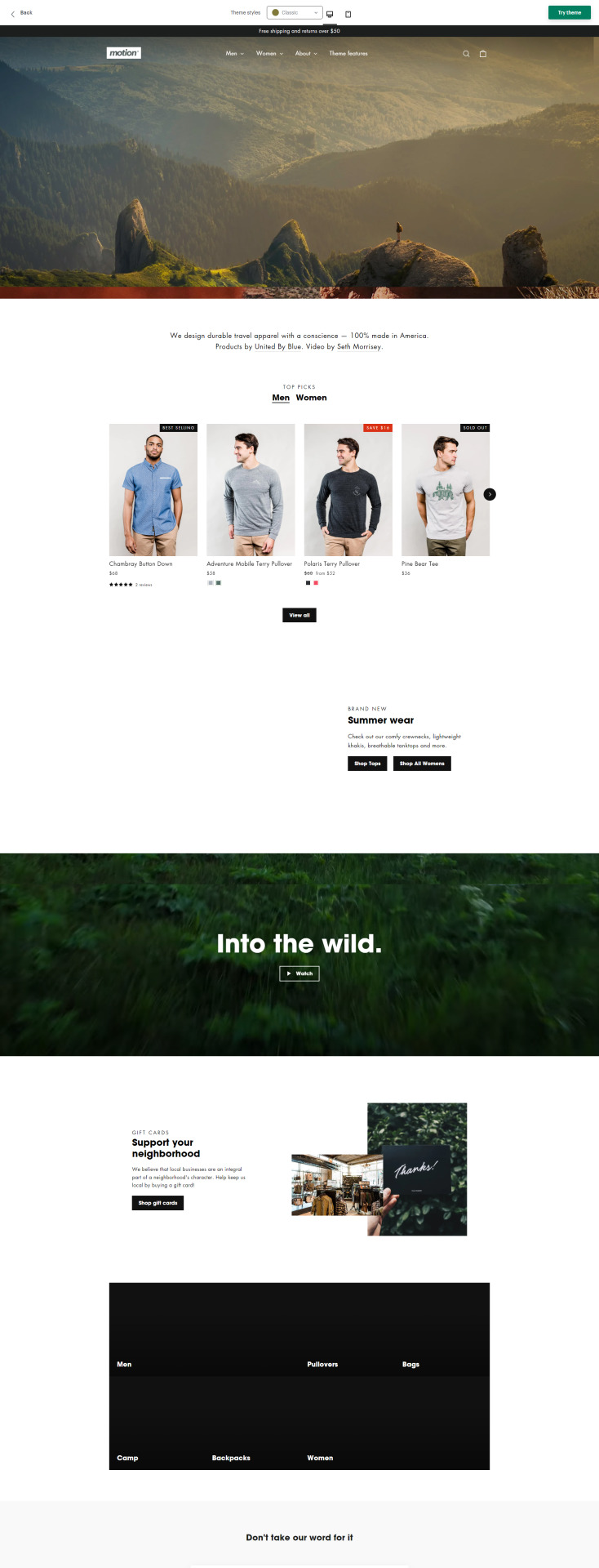
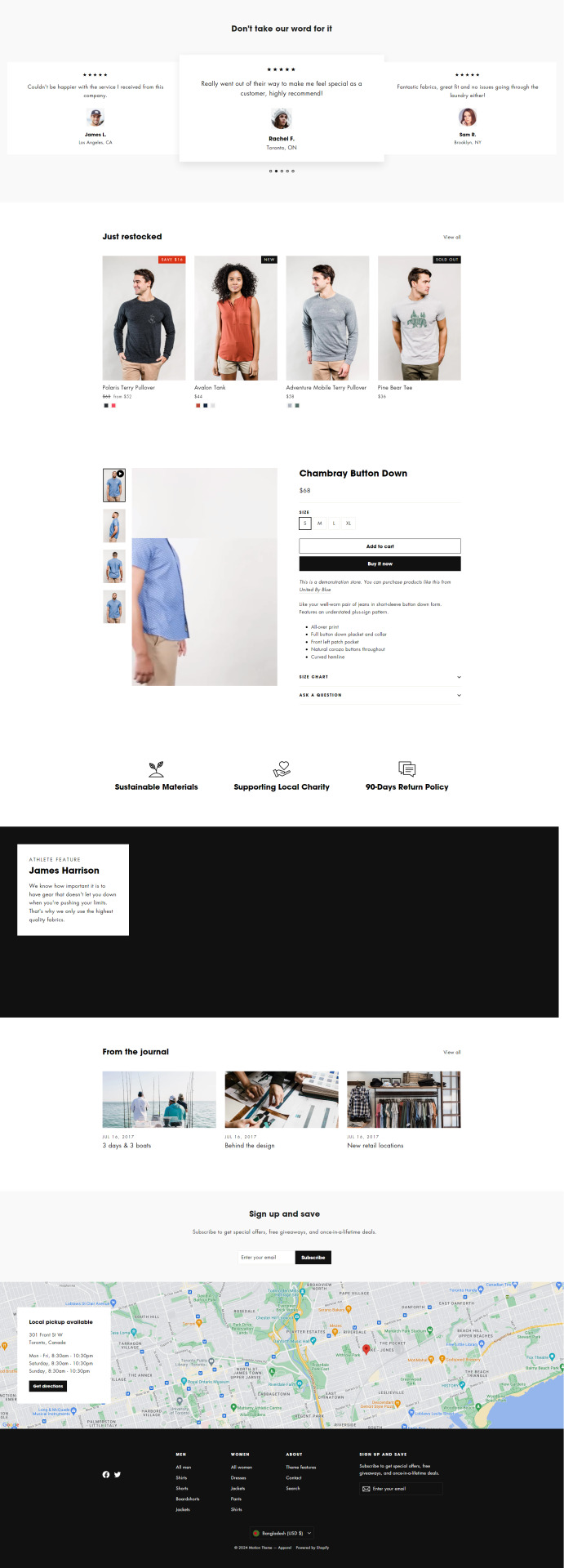
Shopify Store Design
Motion theme Customization.
#shopify#e commerce#elementor#landing pag#wordpress#shopifystore#shopify ecommerce development#shopifyexperts#shopify ecommerce platform#online store#Shopify one product store#shopify store design#Shopify apps#shopify tips#dropshipping
0 notes
Photo

Saree Store One Product Shopify
#shopify#shopify store#shopify expert#one product shopify store#shopify website design services#shopify dropshipping#saree
0 notes
Text

Hello there!
Around a year ago, I came up with some designs for clone booty shorts because they were haunting me and I wanted them. Turns out other people wanted some too!
Someone then reached out to me with a company that could print out the designs and I spent so much time connecting that with Shopify and PayPal and doing a bunch of shit to pull it all together and for a bit it was successful!
However, to keep the shop up it costed like,, $34-$39 a month and after a bit there were no sales and that wasn't something I could sustain/continue to pay for. So I put the store on hold because I didn't want to take it all down since I spent so much time on putting it together 🙃.
BUT!!
I want to bring it back :D
However, that's only if there's enough interest in the shorts! Of course, I do have other products and am planning on making others as well! (Some examples of what is up on the site are under the cut!)
I want to see how many people might be interested in actually getting something from the shop, should it go back online to see if it's worth bringing back. Though, if there are a good handful I might just have it up for the summer and then put it back on hiatus then rinse and repeat. But we shall see!
That being said...
Please reblog!!
That way it can reach as much people as possible :) Thank y'all so much 🩵💫
Some product images under the cut!
Keep in mind all the shorts have a little logo pertaining to the clone on the front of them! (as seen with the clone force 99 ones with the skull and 99 logo)
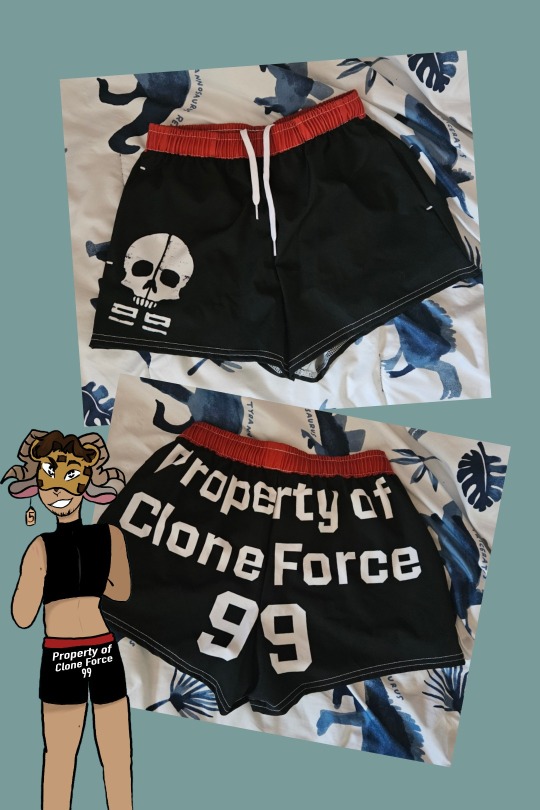


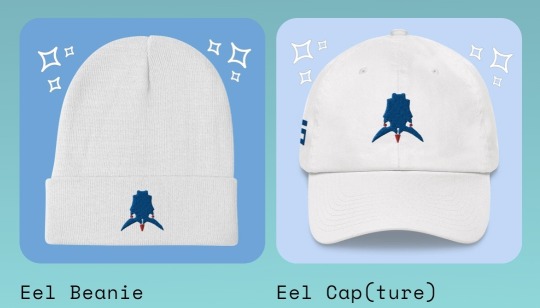

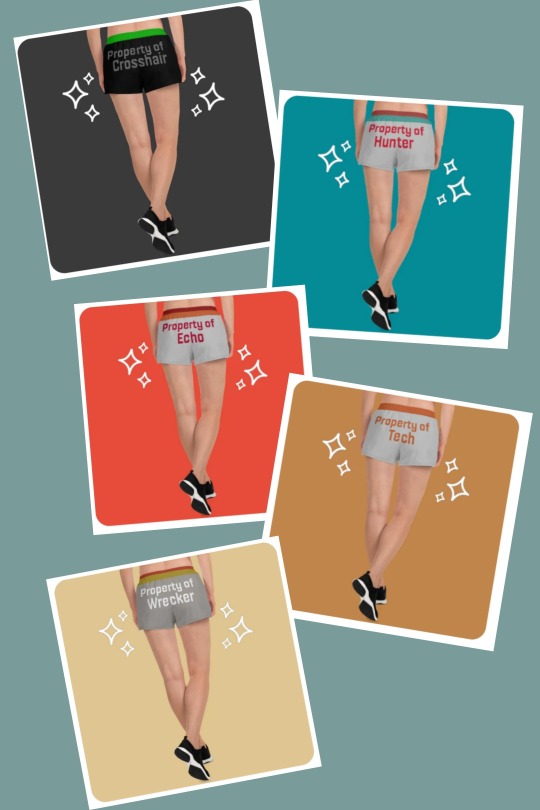
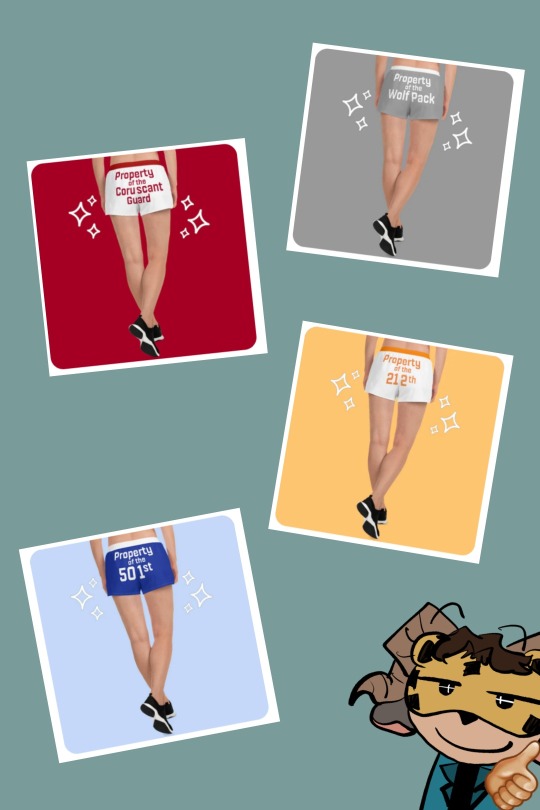
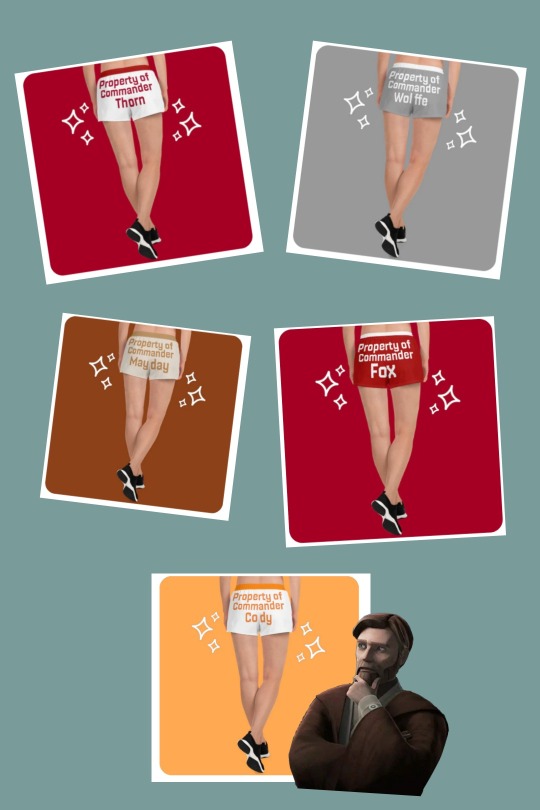
Here is a link to the store to see more!
#going to tag a bunch of clones for exposure reasons#clone shorts#tcw#the clone wars#tbb#bad batch#the bad batch#star wars#clone force 99#clones#clone wars#captain rex#commander cody#commander wolffe#commander fox#clone troopers#501st#212th#104th#wolf pack#coruscant guard#corrie guard#tbb wrecker#tbb crosshair#tbb hunter#tbb tech#tbb echo#arc trooper fives#dominio twins#arc trooper jesse
81 notes
·
View notes
Text
Shopify has a blog problem, this creates a really simple and straightforward opportunity for freelance designers/programmers

Earlier this year I settled the editorial decisions I needed for a lot of blogging going forward, and recently I've experimented (repeatedly) with the idea of having a blog on a separate platform, or using Shopify's system.
Having two sites would allow me to blog on a WordPress site, but creates... two sites, therefore complicates everything more. More maintenance, design, etc. etc.
I am actively seeking to make my life easier so I am foregoing two sites and learning to live with the limitations.
A personal struggle to the surprise of no one.

You can use WordPress and thread Shopify through it via the "buy" button, which is a shortcut for small stores and/or larger stores where you are very comfortable in WordPress.
You cannot use Shopify and thread WordPress through it.
Which is a shame.
Because Shopify's native blog platform is fucking horrible.

An independent graphic designer who can program, or a programmer who can design, cannot solve Shopify's problems.
They are inherent to the system and likely built on legacy code Shopify doesn't want to update because it'll cost a fortune.
I'll just be mad about this until the market forces them to address this opportunity and they revamp their blogging platform. That's fine.
Or maybe decades will pass and they won't. That's... fine too. I guess.

I am rambling this out because if I were in the business of freelance graphic design and/or programming I would jump on this immediately. I used to be and always shared opportunities with friends and it was fun and I kinda miss that aspect of the life.
I'm not in that business, and I have in-house programming, please don't pitch me, but do consider pitching... pretty much everyone with a Shopify site and a blog as Phase 01 of your plan, and everyone who has a Shopify site and does not have a blog as Phase 02 of your plan.
Here is what I would tackle:
Shopify blogs have two structures: "blog" and "blog post".
A blog in Shopify is essentially a category in WordPress, with more limitations, such as, a blog post can only be in a single "blog". That sucks but it means your life as a designer/developer gets more interesting.
Most Shopify themes come out of the box with 1 "blog" and 1 "blog post" template. They are exceptionally simple, usually. I would build a few test templates and offer them to clients "these will be modified to fit your direct style."
For some reason -- I'm guessing focus -- most blogs in Shopify have the image on top. If you structure "image on the left, image on the right" as options you can offer clients, you've just tripled their layout capabilities.
For another reason, I don't know why, but almost all shopify blog post templates I've seen do not have sidebars. Which is insane?! You can control that from the fucking "blog post" template so it would be an easy win.
You could work around the "a post can only be in one blog on Shopify" issue by having a sidebar that pulls the latest 3 (or 5 or whatever) posts as links for other blogs on the site: TEST SITE has 3 blogs. When you're looking at a post on BLOG 01, in the sidebar, you see a link to the latest post on BLOG 02 and BLOG 03. Similarly, when you're looking at a post on BLOG 02, the sidebar has the latest post from BLOG 01 and BLOG 03 (and so on)
The template I use, off the shelf, uses the Shopify's user name and details for the author of the blog. Once a blog post is created, in Shopify, you cannot alter the author. This is dumb as fucking rock salt on slug popcorn. But, again, systematic, I'm pitching ideas on ways around it -- exclude this and just use a CUSTOM DATA field to allow the Shopify owner to pick the relevant author. This cuts down on the need for extra Shopify users, tremendously, and builds in the opportunity for WordPress-style author footers on blog posts.
Emulate the very common filtering on products -- dropdowns, sorting mechanisms -- with tags on a sidebar on BLOG templates. This will be tricky because you cannot hook into the Search & Discovery function, but it's absolutely no where near impossible. And would be amazingly useful.

Overall Shopify is a decent platform with significant advantages.
There blogger apps but holy shit that is so unnecessary. If they were a one-time-fee, it would be fine, but they aren't, they're generally $20+/month.
I'm not interested in paying for a service that ties me into another tech system that I am fucked if they go out of business, jack up their prices, introduce a feature I don't like, or remove a feature I do like.
For something like a blog system.
Which relies HEAVILY on very structured, single-built, near-infinitely-reused templates.

A low effort, high yield opportunity exists for independent designer/programmers to come up with a suite of designs and say "hey with some very simple modifications, we can take 1 of the following, apply it to your store, and dramatically increase your in-site blogging opportunities."
You start with a base "blog post" template and a base "blog" template and then every time someone hires you to add a feature to theirs, using Shopify's core tech -- you're just applying paint -- you now have a second set of templates.
Recycle forward.
One time fee per client -- likely low, but again effort is low since 90% of the code is re-used -- and each time you secure a client, you have opened a networking door.

Just make sure you include instructions and/or a premium service for when the customer upgrades their theme version -- "occasionally your theme author will upgrade, and this may get lost... so do the following to bring it back and/or we'll handle it for you for $X and Y-days notice."
Business opportunities are everywhere.
Good luck!
I repeat don't add me to your pitch list, I have a programmer in-house, but use this idea to make a business or extend yours!
This isn't financial advice, it is annoyed rambling!
#shopify#small ecommerce#small business#web design#ecommerce design#blogging#shopify blogging#graphic design#blog design
18 notes
·
View notes
Text

Starting an e-commerce business can be an exciting venture with immense potential. However, with the opportunities come challenges and uncertainties. Before diving into the world of online retail, it’s crucial to plan carefully and set a solid foundation. Here are some essential tips to consider before launching your e-commerce business:
1. Conduct Market Research
Understanding the market is fundamental to any successful business. Start by identifying your target audience and analyzing competitors. Research trends, customer preferences, and potential gaps in the market. Tools like Google Trends, social media analytics, and industry reports can provide valuable insights. This research will help you tailor your products or services to meet market demands and differentiate yourself from competitors.
2. Define Your Business Model
E-commerce offers various business models, such as B2C (Business to Consumer), B2B (Business to Business), C2C (Consumer to Consumer), and subscription-based models. Determine which model aligns with your goals and resources. Each model has its own set of challenges and requirements, so choose one that best fits your product or service and target market.
3. Create a Solid Business Plan
A comprehensive business plan serves as a roadmap for your e-commerce venture. Outline your business goals, strategies, target audience, marketing plan, financial projections, and operational plan. This document will not only guide your efforts but also help secure funding if needed. A clear plan can keep you focused and organized as you navigate the complexities of launching and running an e-commerce business.
4. Choose the Right E-Commerce Platform
Selecting the right e-commerce platform is crucial for the success of your online store. Popular platforms like Shopify, WooCommerce, Magento, and BigCommerce each offer unique features and capabilities. Consider factors such as ease of use, scalability, customization options, payment gateways, and integration with other tools. The platform should align with your business needs and provide a user-friendly experience for both you and your customers.
5. Develop a User-Friendly Website
Your website is the face of your e-commerce business. Ensure it’s designed to be user-friendly, visually appealing, and optimized for mobile devices. A clean, intuitive layout with easy navigation will enhance the shopping experience and reduce cart abandonment rates. Focus on high-quality images, detailed product descriptions, and a seamless checkout process. Additionally, implement search engine optimization (SEO) strategies to improve your site’s visibility in search engines.
6. Implement Secure Payment Processing
Security is a top priority in e-commerce. Customers need to trust that their payment information is safe. Choose a reputable payment gateway and ensure your website uses SSL certificates to encrypt data. Additionally, offer multiple payment options, including credit/debit cards, digital wallets, and other payment methods that are popular with your target audience.
7. Plan Your Logistics and Supply Chain
Efficient logistics and supply chain management are vital for e-commerce success. Develop a strategy for inventory management, warehousing, and shipping. Decide whether you’ll handle fulfillment in-house or partner with third-party logistics providers. Consider shipping options, delivery times, and costs. A smooth and reliable fulfillment process can significantly impact customer satisfaction and repeat business.
8. Craft a Marketing Strategy
Effective marketing is essential to drive traffic and sales to your e-commerce store. Develop a multi-channel marketing strategy that includes social media, email marketing, content marketing, and paid advertising. Create engaging content, run promotions, and leverage social media platforms to build brand awareness and attract customers. Monitor and analyze the performance of your marketing efforts to refine your strategies over time.
9. Focus on Customer Service
Exceptional customer service can set your e-commerce business apart from competitors. Provide multiple channels for customer support, such as live chat, email, and phone. Ensure timely responses to inquiries and resolve issues promptly. Building strong customer relationships and encouraging feedback can enhance customer loyalty and drive positive reviews.
10. Monitor and Adapt
The e-commerce landscape is constantly evolving. Regularly review your business performance, track key metrics, and gather customer feedback. Stay informed about industry trends and technological advancements. Be prepared to adapt your strategies and operations based on insights and changes in the market.
#ecommerce#marketing#business#digitalmarketing#ecommercebusiness#entrepreneur#onlineshopping#website#seo#webdesign#b#marketingdigital#onlinebusiness#branding#shopify#smallbusiness#socialmediamarketing#webdevelopment#online#amazon#shopping#onlinestore#onlineshop#design#ecommercewebsite#dropshipping
4 notes
·
View notes
Text
Shopify Ecommerce & On-Demand Apps: Your Complete Development Solution

In today’s digital age, having a strong online presence is crucial for business success. Shopify has emerged as one of the leading platforms for eCommerce, offering a robust and flexible environment for businesses of all sizes. Whether you’re just starting or scaling your online store, Shopify eCommerce website development provides the tools and features necessary to build a thriving online business.
Why Choose Shopify for Ecommerce?
Shopify offers a user-friendly interface and a wide range of customizable themes, making it an ideal choice for businesses looking to create a professional online store without extensive technical knowledge. The platform’s extensive app ecosystem allows for seamless integration of various functionalities, such as payment gateways, inventory management, and marketing tools, all of which contribute to a smooth shopping experience for customers.
On-Demand Services Apps: Meeting Modern Consumer Needs
As consumer demand for convenience continues to grow, on-demand services apps have become increasingly popular. These apps allow users to access services such as food delivery, ride-sharing, and home maintenance with just a few taps on their smartphone. For businesses, developing an on-demand services app can open up new revenue streams and provide a competitive edge in a crowded market.
Combining Shopify with On-Demand Services
By integrating Shopify with an on-demand services app, businesses can offer a seamless shopping and service experience to their customers. For example, a business could use Shopify to manage product sales while also offering on-demand delivery services through a custom app. This approach not only enhances customer satisfaction but also streamlines operations by centralizing sales and service management within one platform.
The Development Process
Developing a Shopify eCommerce website or an on-demand services app requires a clear understanding of your business goals and target audience. It’s essential to work with experienced developers who can translate your vision into a functional, user-friendly platform. The development process typically involves several stages, including planning, design, development, testing, and launch, each of which plays a critical role in ensuring the final product meets your expectations.
Final Thoughts
Shopify eCommerce website development, combined with on-demand services apps, offers a powerful solution for businesses looking to expand their online presence and meet the needs of today’s consumers. By leveraging the strengths of both platforms, you can create a comprehensive, user-friendly solution that drives growth and enhances customer satisfaction.
2 notes
·
View notes
Note
thank you for the advice on pins ! i am in the process of researching how to set up my shop and i have a couple more questions if you don't mind-
at what stage did you feel it was time to open your shop, follower-wise? did it take a long time to become profitable ?
i saw you go through a manufacturer for your prints, is it because making them is too expensive?
i see you don't make stickers, is there a reason?
is a laser cutting machine worth it when debuting ? or superfluous?
what did you use to design your website (it's very pretty btw)? do you have advice on getting people interested in checking it out?
how does one deal with sales being down, mentally, and how to be patient in the beginning?
does managing orders require a lot of organization? is a label maker worth the time it saves? in general, do you recomment buying your own machines (printer, or button maker) or stick with manufacturers? also, do you have advice on reconcialiting it with anticapitalism because im feeling conflicted about outsourcing labor and adding products to this world...
is setting up shopify very hard ? are taxes a hassle ?
sorry if it's a lot, i have trouble wrapping my head around every step i'll have to do and want to avoid beginner mistakes if i can. if you have any other advice and traps to avoid i'd be very grateful
dude this is SO many questions.
the short answer is: everything is hard and takes work.
there is no “right” time to start a shop or start selling stuff. you just kind of do it and hope. i opened mine in college (around 2012 or 2013) because i had already made some merch for a local convention and i wanted to sell the leftovers. my store didn’t become viable as a full time job until around 2017—it was a means to subsidize the income i had from working as a freelance artist.
also i never went into debt for the store so there was never a moment when my store “became profitable.” unless you’re willing to go into debt for this (not something i’d recommend), it’s a slow slog to get to a point where you can afford to sell items with a higher price point at a high enough volume that it is viable as a full career. inventory costs money and the more profitable items cost more money. it takes a lot of time and work and momentum to make this your whole job.
buying your own equipment is only worth it if you plan to use that equipment for multiple years to get a good return on investment.
however a label printer is almost always worth it, but i wouldn’t buy one until you’re getting at least 20 orders a month.
low price point items like buttons and stickers can be good to start out (i used to sell both) but at a certain point, unless you’re selling a massive amount of them there is a limit to how profitable a $3 item can be.
managing a store takes an amount of work/organization that is proportional to the number of products you have/sell. i will say i was an absolute disaster at this when i handled everything myself, which is why the store only became viable as a full time job once devin joined me.
i use squarespace for my portfolio site and shopify for the store. they’re relatively hassle free.
if you’re making most of your income from store or freelance work, find a local CPA to help you do taxes. also keep a running spreadsheet for all your expenses and income. separate your expenses into groups based on the different types of deductions (i.e. office equipment, travel, etc.) and update that spreadsheet, at minimum, once a month. then taxes are easy.
as far as anticapitalist mindset goes… do your due diligence when it comes to sussing out the manufacturers/companies you work with and try to create thoughtfully.
anyway next time you ask for advice please just pick like 3 questions at a time. this was… a lot.
35 notes
·
View notes
Text
Business Operations Plan for Crafty Creations: Hand-made Jewelry and Accessories
Business Overview: Crafty Creations specializes in creating unique, eco-friendly handmade jewelry and accessories. Operating exclusively online via Facebook, Instagram, and TikTok, we aim to reach fashion-conscious individuals who value sustainability and personalization.
2. Goals and Objectives:
Short-term Goals:
Establish a strong online presence on Facebook, Instagram, and TikTok.
Launch the first collection of handmade jewelry and accessories within the first month.
Achieve at least 100 sales in the first 14 weeks.
Long-term Goals:
Build a loyal customer base and achieve repeat customers.
Expand the product line to include seasonal and themed collections.
Establish partnerships with local eco-friendly stores for consignment sales.
3. Production Process:
Materials Sourcing:
Purchase eco-friendly and recycled materials such as beads, wire, fabric scraps, and findings from local craft stores and online eco-friendly suppliers.
Design and Crafting:
We create unique designs based on current fashion trends and customer feedback.
Allocate daily time slots for crafting to ensure a steady production flow.
Quality Control:
Inspect each piece for durability and aesthetic appeal before listing it for sale.
4. Marketing Strategy:
Social Media Marketing:
Content Creation: Post regular updates, behind-the-scenes crafting videos, and customer testimonials on Facebook, Instagram, and TikTok.
Engagement: Respond promptly to comments and messages, and engage with followers through polls, Q&A sessions, and giveaways.
Influencer Collaborations: Partner with micro-influencers in the sustainable fashion niche to promote products.
Advertising:
Run targeted ads on Facebook and Instagram to reach potential customers based on their interests and demographics.
Utilize TikTok's algorithm by creating trending, engaging content to gain visibility.
5. Sales and Distribution:
Order Processing:
Use an online platform such as Shopify to manage orders, payments, and inventory.
Provide detailed product descriptions, high-quality images, and customer reviews to enhance the shopping experience.
Shipping:
Use eco-friendly packaging materials to align with the brand’s sustainability values.
Partner with reliable shipping services to ensure timely and safe delivery of products.
Offer free shipping for orders over a certain amount to encourage larger purchases.
6. Customer Service:
Support:
Provide excellent customer service by promptly addressing inquiries and resolving issues.
Implement a clear return and exchange policy to build trust and satisfaction.
Feedback:
Encourage customers to leave reviews and feedback on social media platforms and the website.
Use feedback to improve product offerings and customer experience.
7. Financial Management:
Budgeting:
Track expenses meticulously, including materials, marketing, shipping, and platform fees.
Reinvest a portion of profits into the business to fund new materials and marketing efforts.
Pricing Strategy:
Set competitive prices that reflect the quality and uniqueness of the handmade products while ensuring profitability.
Offer occasional discounts and promotions to attract new customers and reward loyal ones.
8. Performance Monitoring:
Metrics:
Monitor social media engagement, website traffic, sales figures, and customer feedback regularly.
Adjustments:
Adjust marketing strategies based on performance data and customer insights.
Continuously improve product quality and variety based on market trends and customer preferences.
9. Expansion Plans:
Product Line:
Introduce new product lines such as seasonal jewelry, limited-edition collections, and customizable options.
Market Reach:
Explore additional online marketplaces like Etsy and local craft fairs to increase visibility and sales.
By following this business operations plan, Crafty Creations aims to establish a strong online presence, meet customer needs effectively, and achieve sustainable growth in the handmade jewelry and accessories market.
4 notes
·
View notes
Text
Shopify Development Agency That Offers Client-Centric Ecommerce Solutions

With nearly one-third of the eCommerce market to its credit, the Shopify platform offers easy-to-customize themes, scalable architecture, secure payment gateways, easy setup, responsive design, SEO features, and more to build the best online store possible. Rely on our shopify development agency when you want a solid team of Shopify developers who convert product shopping into a fantastic user experience.
2 notes
·
View notes
Text
How to Start a Dropship Business: A Step-by-Step Guide
How to Start a Dropship Business
Dropshipping has become an increasingly popular business model due to its low startup costs and simplicity. By leveraging suppliers to handle inventory and shipping, entrepreneurs can focus on marketing and customer service. If you're looking to start a dropship business, here's a comprehensive guide to help you get started.
1. Choose a Niche
Selecting a profitable niche is crucial for the success of your dropshipping business. Consider your interests, market trends, and potential competition. Use tools like Google Trends and SaleHoo’s Market Research Lab to identify niches with high demand and low competition.
2. Find Reliable Suppliers
Reliable suppliers are the backbone of your dropshipping business. SaleHoo offers a directory of vetted suppliers, ensuring you partner with reputable and reliable providers. Evaluate suppliers based on their product quality, shipping times, and customer service.
3. Set Up Your Online Store
Create a professional-looking online store to attract customers. Platforms like Shopify, WooCommerce, and BigCommerce are popular choices for dropshipping businesses. Customize your store’s design, add product descriptions, and set up payment gateways.
4. Optimize Product Listings
Ensure your product listings are detailed and compelling. Include high-quality images, detailed descriptions, and competitive pricing. SEO-optimized product listings will help improve your store’s visibility in search engine results.
5. Market Your Business
Effective marketing is essential to drive traffic to your online store. Utilize social media marketing, email marketing, and content marketing strategies. Platforms like Facebook, Instagram, and TikTok can be powerful tools to reach your target audience.
6. Manage Orders and Customer Service
Once orders start coming in, manage them efficiently. Automate order processing with tools like Oberlo or SaleHoo Dropship. Provide excellent customer service to build trust and encourage repeat business.
7. Analyze and Optimize
Regularly analyze your business performance using tools like Google Analytics. Track key metrics such as traffic, conversion rates, and customer acquisition costs. Use this data to optimize your marketing strategies and improve your store’s performance.
Conclusion
Starting a dropship business is a viable and lucrative option for aspiring entrepreneurs. By following these steps and leveraging resources like SaleHoo, you can build a successful online store with minimal upfront investment. Remember to stay patient, persistent, and continually optimize your strategies for the best results.

SaleHoo offers the eCommerce Accelerator which is the ultimate all-in-one solution for establishing and maintaining a profitable eCommerce business. This comprehensive product provides everything you need to succeed, including in-depth dropshipping and wholesale training, a powerful market research tool, a dropship management tool, an extensive directory tool, and eight valuable bonuses. Check it out now to get started
4 notes
·
View notes
Text
I will design, redesign shopify store, shopify dropshipping store, shopify website

Are you looking for a Shopify expert to create a highly profitable Shopify dropshipping store that generates Good revenue?
Look No Further, I will help you
As a Shopify expert with a track record of building successful online businesses, I will assist you in making your dreams a reality.
I am a professional Shopify designer with years of experience. I specialize in design redesign, custom, responsive, visually stunning, high-converting Shopify dropshipping stores / websites that are tailored to your specific business needs and generate significant revenue.
What I Will Provide:
Shopify Store Build and Customization With Premium Theme
Shopify Website Development
SEO Optimization
Responsive Design
App Integration
Payment Gateway Setup
Live Chat Integration
Why Should You Hire Me:
Visually appealing and user-friendly Shopify store design that reflects your brand and engages your audience.
Custom Shopify development to meet your specific needs, from integrating third-party apps to building custom plugins.
Be smart and make smart decisions! Place an order today and enjoy premium services.
Check it out here
#shopify#shopify store#shopify website#shopify dropshipping#dropshipping#shopify store design#shopify store design and redesign#shopify one product store design#shopify store setup#setup shopify dropshipping store#setup shopify store#shopify store creation#copy shopify store#shopify store development#print on demand shopify store#jewelry shopify store
1 note
·
View note
Text
What kind of online business?
Online businesses vary greatly in terms of their structure and focus, catering to a wide range of niches and industries. Here are some different categories to explore:
E-commerce: This involves the sale of physical products online through platforms like Shopify, Amazon, or Etsy.
Digital Products: Creating and selling digital products such as ebooks, online courses, software, or downloadable templates.
Subscription Services: Providing subscription-based services where customers pay a recurring fee for access to exclusive content, products, or services.
Affiliate Marketing: Promoting products from other companies and earning a commission for each sale made through your referral.
Dropshipping: Operating an online store without the need to hold inventory. When a customer makes a purchase, the product is shipped directly from the supplier to the customer.
Freelancing: Offering services like writing, graphic design, web development, or consulting on platforms such as Upwork or Fiverr.
Blogging/Vlogging: Creating content within a specific niche and monetizing it through advertising, sponsored content, or affiliate marketing.
App Development: Developing and monetizing mobile apps through app stores or subscription models.
Online Consulting/Coaching: Providing expertise in a particular field through one-on-one coaching sessions, webinars, or group coaching programs.
Print-on-Demand: Designing custom products like t-shirts, mugs, or phone cases and selling them online without the need to hold inventory.
These are just a few examples, and the opportunities are vast. The most suitable type of online business for you will depend on your interests, skills, resources, and target audience.
onlineshopping #onlineshop #fashion #business #entrepreneur #digitalmarketing #onlinemarketing #blogger #style #hustle #love #entrepreneurlife #entrepreneurship #workfromhome #stylish #dresses #makemoneyonline #smallbusiness #marketing #moda2019 #followforfollowback #likeforlikeback #dressesforsale #onlineboutiqueshopping #liked #soirée #womeninbusiness #hustleharder #photooftheday #motivationalquotes

#digital marketing#youtube video#website seo#smallbusiness owner#ecommerce#seo#marketing#original art#online business
2 notes
·
View notes
Photo


Jewelarry One Product Shopify store
#shopify#shopify store#shopify expert#shopify one product#shopify dropshipping#shopify design#jewelarry
0 notes
Text
How do you sell Amazon products on a Shopify site? Is a Shopify site necessary? Is there a better platform out there?
Selling Amazon products on a Shopify site can be a strategic move to broaden your reach and increase sales. While it's not mandatory to use Shopify, it offers a user-friendly platform that provides numerous benefits for sellers like us.
Firstly, Shopify allows you to sync your Amazon products with your Shopify store, creating a centralized hub for managing inventory, orders, and customer data. This ensures that changes in product details, pricing, or availability on Amazon are reflected on your Shopify site.
Having a dedicated Shopify store can enhance your brand presence and customer experience. You have the flexibility to customize your store's design to create a brand image for your customers. This brand consistency fosters trust and loyalty, leading to increased sales.
Additionally, a Shopify store provides you with more control over customer communication. You can implement targeted marketing strategies, email campaigns, and promotions specific to your Shopify audience. This direct engagement can help build a loyal customer base and drive repeat business.
In terms of whether Shopify is necessary, it depends on your business goals. If you're solely focused on selling through Amazon, a Shopify site may not be essential. However, if you’re looking to diversify your sales channels, establish a distinct brand presence, and gain more control over the customer experience, Shopify can help.
While Shopify is a popular choice, it's not the only platform available. Alternatives like WooCommerce and BigCommerce offer similar functionalities. The choice depends on your specific needs and budget. It's crucial to evaluate each platform's features, ease of use, and capabilities before making a decision.
A step further, for those considering multi-channel sales, is to pick an integration service provider to automate your business processes. Be it product listing, inventory, order management, or real-time data sync, an integration service can be an invaluable asset. Once these manual tasks are taken care of, it leaves more room for strategizing and expansion. I have benefited greatly from my experience with CedCommerce’s Amazon Shopify Channel.
In conclusion, selling Amazon products on a Shopify site is a strategic move that can offer numerous benefits. While Shopify is a robust option, other platforms may suit your needs, so it's essential to research and choose the one that aligns with your business goals and preferences.
#ecommercebusiness#shopify#ecommercestore#cedcommerce#ecommerce#shopifyseller#amazonseller#woocommerce#amazon#remote work#amazon products
3 notes
·
View notes
Text
How Can You Scale Your eCommerce Business With Shopify?
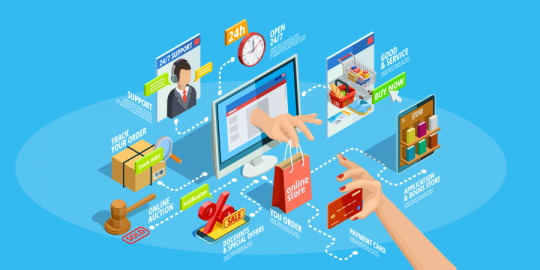
Are you ready to take your online store to new heights? With Shopify by your side, scaling your e-commerce business has never been easier!
In this guide, we'll walk you through the process of expanding your business and reaching new heights of success. So, let's dive in and discover how to scale your e-commerce business with Shopify!
1. Optimize Your Store for Growth
Before you can scale your business, it's essential to ensure that your online store is ready for growth. Start by reviewing your website's design and functionality.
Is it user-friendly? Does it load quickly? Are your products easy to find? Make any necessary improvements to ensure that your store is optimized for a seamless shopping experience.
2. Expand Your Product Catalog
One of the keys to scaling your e-commerce business is to expand your product catalog. Consider adding new products or expanding your existing product lines to attract a wider audience.
Shopify makes it easy to manage your inventory and add new products to your store, so don't be afraid to experiment and diversify your offerings.
3. Reach New Customers
To scale your business, you'll need to reach new customers and expand your customer base. Utilize Shopify's marketing tools and integrations to attract attention to your store and drive traffic.
Consider investing in paid advertising, social media marketing, and email campaigns to reach potential customers and encourage them to visit your store.
4. Provide Excellent Customer Service:
Happy customers are the foundation of a successful e-commerce business.
Provide excellent customer service to ensure that your customers have a positive shopping experience and keep coming back for more.
Respond promptly to inquiries, address any issues or concerns, and go above and beyond to exceed your customers' expectations.
5. Optimize Your Operations
As your business grows, it's essential to optimize your operations to keep up with increased demand.
Streamline your processes, automate repetitive tasks, and invest in tools and technology that can help you scale more efficiently.
Shopify offers a range of apps and integrations that can help you manage your operations and streamline your workflow.
6. Track Your Progress
Keep track of your progress as you scale your business with Shopify's built-in analytics and reporting tools.
Monitor key metrics such as sales, traffic, and customer engagement to track your growth and identify areas for improvement.
Use this data to make informed decisions and adjust your strategy as needed to continue scaling successfully.
7. Partner with Shopify Development Company
Consider partnering with a Shopify development company to help you navigate the complexities of scaling your e-commerce business.
A Shopify development company can provide expert guidance, technical support, and customized solutions to help you achieve your business goals and overcome any challenges along the way.
By following these steps and leveraging the power of Shopify, you can scale your e-commerce business and achieve new levels of success.
So, roll up your sleeves, get ready to grow, and watch your business soar with Shopify by your side.
2 notes
·
View notes